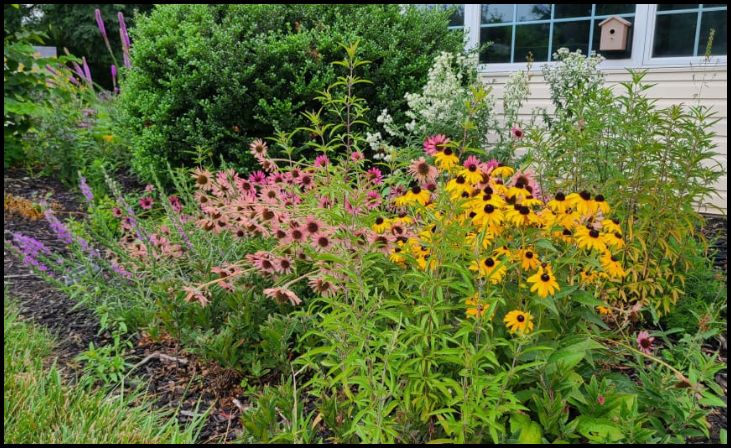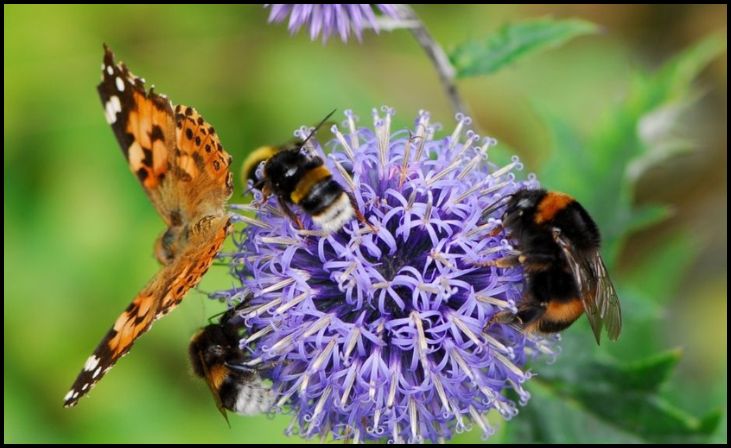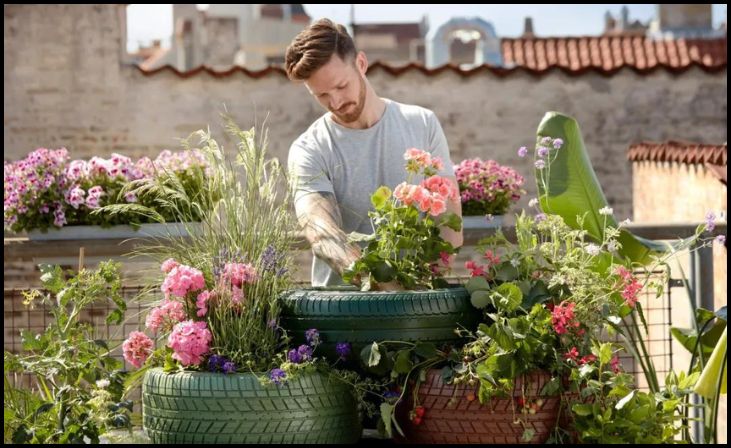Do you have a deep passion for gardening and a desire to make it not only beautiful but also eco-friendly? In this comprehensive article, we’re embarking on a journey to explore 11 amazing tips for eco-friendly gardening. These tips will not only enhance the aesthetics of your garden but also play a pivotal role in fostering a sustainable and healthy environment.
Gardening isn’t just about nurturing plants; it’s about cultivating a connection with nature and being responsible stewards of our planet. Whether you’re a seasoned gardener or just starting, the practices we’re about to delve into will empower you to make a positive impact. From water conservation techniques to attracting essential pollinators, we’ve got all the bases covered.
Imagine a garden where every blossom tells a story of ecological harmony, where the very act of tending to your plants becomes a way to give back to the Earth. This article is your gateway to that vision. So, without further ado, let’s dive into these 11 incredible tips that will not only transform your garden but also contribute to the well-being of our planet.
Eco-Friendly Gardening
Eco-friendly gardening, often referred to as sustainable or green gardening, is a holistic approach to nurturing plants and the environment in harmony. It goes beyond the beauty of blooms and lush lawns, focusing on practices that conserve resources, reduce waste, and support the local ecosystem. From planting native species and using organic fertilizers to water conservation and attracting beneficial pollinators, eco-friendly gardening is a commitment to responsible and sustainable horticulture. By adopting these practices, gardeners not only create a haven for plants and wildlife but also play a crucial role in promoting a healthier, more balanced planet.
11 Amazing Tips For Eco-Friendly Gardening
In this section, we will take a deep dive into each of these 11 remarkable tips for eco-friendly gardening. Our goal is to provide you with valuable insights and practical advice to ensure that you can successfully implement these techniques in your garden.
Start with Native Plants

One of the foundational principles of eco-friendly gardening is to begin with native plants. This not only benefits your local ecosystem but also reduces the maintenance demands on your garden. Native plants have naturally adapted to your region’s climate and soil conditions, making them more resilient and attractive to the wildlife in your area.
Use Organic Fertilizers
Transitioning to organic fertilizers is a pivotal step in eco-friendly gardening. By doing so, you minimize the use of synthetic chemicals that can harm the environment and your health. Organic fertilizers not only enhance soil health but also foster the growth of beneficial microorganisms, creating a thriving and balanced ecosystem beneath the surface.
Also Read:- Green Home Improvements
Conserve Water
Water, an invaluable resource, plays a central role in eco-friendly gardening. The conservation of water is a fundamental aspect of this practice. Installing a rain barrel to collect rainwater and employing a drip irrigation system are key strategies for minimizing water wastage, ensuring that every drop is used efficiently.
Practice Companion Planting
Companion planting is a clever technique that involves the strategic arrangement of plants to mutually benefit one another. For instance, by planting marigolds alongside your vegetables, you can naturally deter pests. This age-old method harmonizes plant relationships, making your garden more self-sufficient and reducing the need for chemical interventions.
Mulch for Moisture Retention
Mulching serves multiple purposes in eco-friendly gardening. It not only suppresses the growth of weeds but also aids in retaining soil moisture. This, in turn, reduces the frequency of watering and keeps the soil cool during scorching hot weather, creating an environment where your plants can thrive.
Attract Pollinators

In the intricate dance of nature, pollinators such as bees and butterflies are the unsung heroes. They play a vital role in plant reproduction. To ensure a bountiful garden, it’s crucial to plant flowers that attract these beneficial insects. By doing so, you not only enhance the beauty of your garden but also contribute to the local ecosystem.
Implement Integrated Pest Management
Eco-friendly gardening avoids the excessive use of pesticides. Instead, it embraces integrated pest management (IPM) techniques, which focus on prevention and natural methods of pest control. By understanding the life cycles of pests and their natural predators, you can maintain a balanced and healthy garden.
Compost Your Waste
Waste reduction is at the heart of eco-friendly gardening. You can enrich your garden’s soil by composting kitchen scraps and yard waste. Compost acts as a natural, nutrient-rich fertilizer, reducing waste and promoting sustainability.
Choose Eco-Friendly Garden Tools
Your choice of gardening tools matters. Opt for hand tools or electric-powered equipment over gas-guzzling machines. Eco-friendly tools not only reduce your carbon footprint but also ensure that your gardening practices are aligned with a sustainable future.
Reduce Lawn Areas
Lawns are notorious water guzzlers and require extensive maintenance. Consider reducing your lawn area and replacing it with native plants, a vegetable garden, or even a wildflower meadow. This transformation not only conserves water but also enhances the ecological value of your garden.
Also Read:- Green Innovations
Educate Yourself and Share

In the journey of eco-friendly gardening, continuous learning and knowledge sharing are powerful tools. Stay informed about eco-friendly gardening practices and be an advocate for sustainability. Share your wisdom with others, empowering them to join the movement towards a more sustainable and greener future.
Conclusion
Eco-friendly gardening is not a passing trend; it’s a conscious and responsible way to nurture your garden while also caring for the environment. In a world where our actions have far-reaching consequences, adopting these eco-friendly gardening practices is a commitment to creating a better future.
By diligently following these 11 amazing tips, you have the power to transform your garden into more than just a picturesque landscape; it becomes a sanctuary for both plants and wildlife. Imagine your garden as a thriving ecosystem, where every bloom, every leaf, and every creature plays a part in a delicate ecological dance.
As you embrace these practices, you not only enrich your own gardening experience but also set an inspiring example for others. Knowledge is a seed that, when shared, multiplies into a forest of change. By sharing your eco-friendly gardening journey and the wisdom you’ve gained, you become a catalyst for a broader movement towards sustainability and responsible living.
So, don’t just stop at transforming your garden; let your journey be a ripple in the pond of change. By doing so, you contribute to a world where eco-friendly gardening is not just a choice but a way of life. Together, we can create gardens that soothe our souls and heal the planet, one green space at a time.
FAQs
Using native plants promotes biodiversity, conserves water, and reduces maintenance efforts.
You can make organic fertilizers by composting kitchen scraps, using composted manure, or brewing compost tea.
